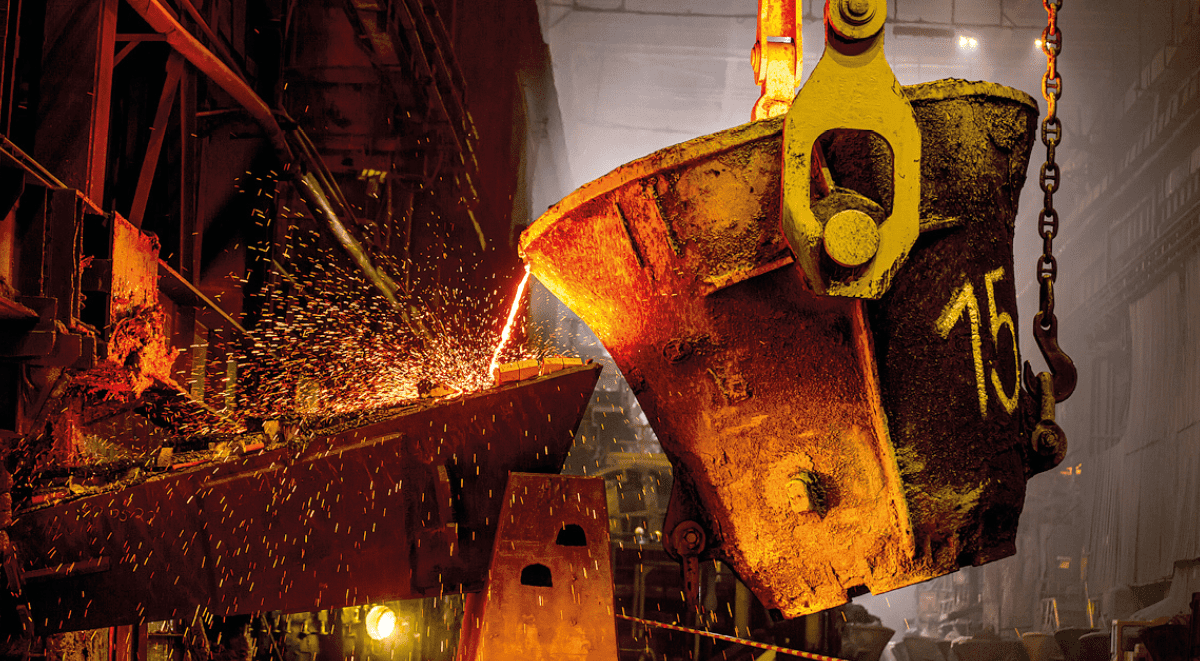Key market trends
In 2023, factors that affected the copper market included: weaker‑than‑expected consumption growth in China amid the construction crisis; weak macroeconomic performance across global major economies; tougher monetary policies; low exchange and bonded stocks in China; strikes and social unrest in Latin America; new renewable installed capacity additions; and a stronger push for transport electrification.
During the year, copper prices showed mixed dynamics, trading between USD 7,900–9,400/t. Peak values were recorded in January amid the lifting of COVID‑19 restrictions in China and low exchange stocks. Then, driven by higher interest rates in major global economies, fears of investors related to the US public debt ceiling, and weaker‑than‑expected demand in China, the price retraced down to USD 7,900/t towards the end of the first half of the year. Once the US public debt had been handled, the copper price rebounded to USD 8,700/t in early August. However, macroeconomic challenges, especially in China, continued to have a negative impact on the market, and the price dropped below USD 8,000/t in early October. Late in the year, protests in Panama resulting in the shutdown of the Cobre Panamá mine supported the copper price, which rose to USD 8,600/t.
The total exchange stocks on the LME, SHFE, and CME grew 13% to 215 kt but remain at their historically‑low level. Bonded stocks in China plummeted 86% from the start of the year to 8 kt.
In 2023, the LME copper price averaged at USD 8,478/t vs USD 8,797/t in 2022 (down 4%).
Sources: producer reports, Company analysis as of late March 2024
Market balance
In 2023, copper mine output increased by 2% to 22.3 Mt, and refined copper production by 4% to 25.6 Mt. Global refined copper consumption totalled 25.4 Mt, up 2%. Overall, the copper market was balanced in 2023, with a statistical surplus of 130kt, or less than 1% of global consumption.
- China lifts COVID‑19 restrictions
- The Las Bambas mine decides to suspend operations
- US increases import tariffs for Russian metals
- Start of the US banking crisis
- Teck Resources rejects Glencore’s 22.5 billion asset acquisition offer
- BHP buys out OZ Minerals for USD 6.6 billion
- Chile’s senate approves progressive mining royalty bill
- US sanctions UMMC
- Udokan Copper starts Cu concentrate production
- LME stocks are at 2‑year highs
- Cobre Panamá halts operations due to protests of local residents
Source: London Metal Exchange, Company analysis
Source: Company’s data as of March 2024
Source: Company data
Consumption
In 2023, global refined copper consumption totalled 25.4 Mt, up 2% y‑o‑y.
Despite weaker‑than‑expected demand recovery due to the construction crisis, China ramped up its domestic consumption to 14.5 Mt, or up 6% y‑o‑y. Imports of refined copper to China fell 4% y‑o‑y to 3.5 Mt, while imports of scrap and concentrates grew 12% and 9% to 2 Mt and 27.6 Mt, respectively.
Demand in Europe and North America dropped to 3.1 Mt (down 5% y‑o‑y) and 2.1 Mt (down 4% y‑o‑y), respectively, while Asia (excluding China) showed a 1% growth to 5.2 Mt. In Russia, apparent primary copper consumption is estimated at 450kt.
Source: Company data
Source: Company data
Supply
Global copper production increased 2% to 22.3 Mt driven by the launch of new and expansion of existing projects.
Chile, the world’s leading copper producer, slightly cut its copper output in 2023, by 1% to 5.3 Mt, due to technical and operational disruptions faced by Codelco, the country’s top producer of the metal. Meanwhile, Peru ramped up its output by 9% y‑o‑y to 2.7 Mt.
Africa managed to increase its output by 9% to 3.6 Mt, with DRC being the top producer through its Ivanhoe’s Kamoa‑Kakula project.
China ramped up its production by 2% to 1.9 Mt, while copper mine production in Indonesia declined 5% to 0.9 Mt.
Production in North America decreased, except for Canada where the output grew 4% to 0.4 Mt. In the US, the decline was 8% to 1.2 Mt, and in Mexico 2% to 0.7 Mt.
Refined copper production grew 4% y‑o‑y to 25.6 Mt amid new capacity launches in China. In South and Central America, production dropped 4% to 2.5 Mt due to the macroeconomic pressure throughout the year. Africa saw a 16% increase in production to 2.2 Mt, while Asia (including China) ramped up its output by 5% to 15.6 Mt. China’s refined copper output increased by 9% to 11.5 Mt, while in Japan it decreased by 1% to 1.5 Mt. Copper output in Europe fell 2% to 3.5 Mt, in North America 4% to 1.5 Mt.
